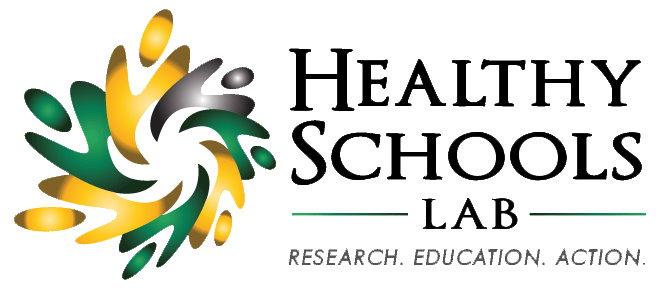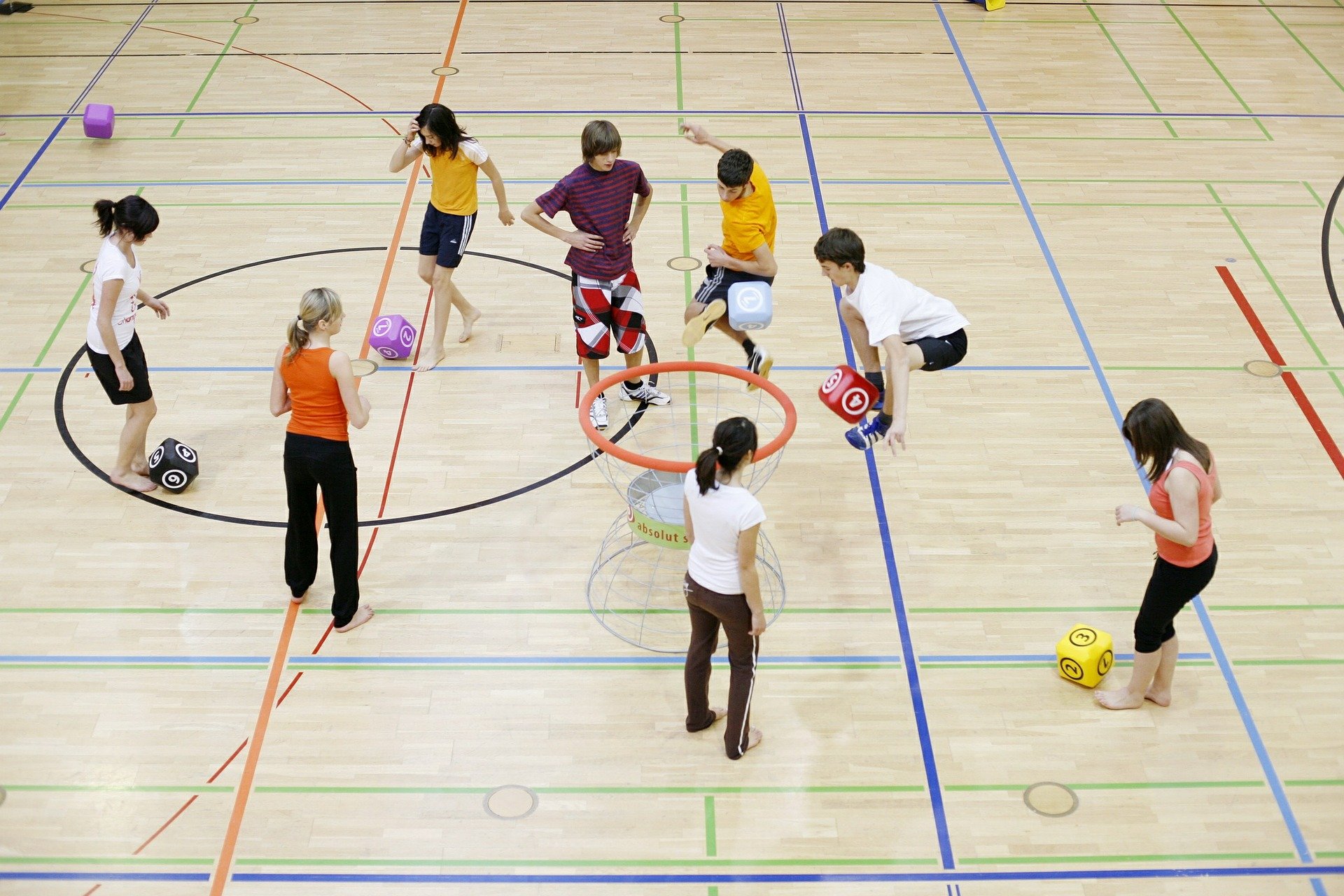RESEARCH 2 PRACTICE
If School Is For All, Why Isn’t School Sport?
A Focus on Participation, Development & Inclusion
Lauren Sulz, Jared Schubert & Douglas Gleddie
I’ve written about school sport before and have also written about the practice of cutting (and here) with Lauren and had a guest post about intramurals. However, along with the two authors above, we wanted to provide an overview of what the research evidence says about school sport – specifically from a participatory perspective. So, we’ve included it as part of the ‘Research 2 Practice’ series. We hope you enjoy! (This post is also available as a downloadable PDF.)
Overview of the problem
School sport can be a valuable contributor to the education and wellbeing of students. However, a low percentage of the student population actually participates in school sports, limiting those receiving the benefits.1 Often the students who do participate are already quite active outside of school and/or fill roster spots on multiple school sport teams. Additionally, schools face a number of obstacles in offering quality and inclusive sport opportunities for students (e.g., finding teachers to coach, space, etc.). These challenges emphasize a need to change the culture of school sport to focus on student-athlete holistic development, enhance student participation rates – of both skilled and developing athletes – and build capacity to attract teachers to coach school sport teams and then maintain their involvement. The challenge for school leaders is to recognize the contributions a re-imagined school sport model can make to the education community and to the holistic success of students; then find ways to value, prioritize, and support school sport.
Benefits of School Sport
Participating in quality sport programs frequently results in a range of emotional, social, physical, and cognitive benefits. Youth who participate in sport display improved self-esteem, social skills, emotional regulation, physical activity engagement, and coping skills for anxiety and stress.2,3,4,5 In addition, life skills such as communication, problem solving, and goal setting can be taught in youth sport contexts.6,7,8 Similarly, participation in school sport has been associated with educational benefits such as increased educational attainment, increased likelihood of attending post-secondary institutions, increased school engagement and commitment, and reduced involvement in risky behaviors. School sport programs also have a unique ability to extend educational opportunities beyond the classroom and enhance development gains not achieved in the classroom.2,9
Barriers to School Sport Programs
Many schools face a number of obstacles to offering quality and inclusive sport opportunities for students. According to Sulz et al. (2019) three of the biggest obstacles are a lack of teacher volunteers, a focus on winning, and tensions with club sports.
Lack of Teacher Volunteers: Most coaches in school sport are teachers who volunteer their time. However, teachers are becoming more resistant to coaching due to workload, lack of support, and family obligations. As a result, the sustainability of school sport programs is challenged.10 One key concern revolves around how much time coaching occupies in one’s life.11 There is a significant time requirement involved in coaching school sport teams and this creates stress on the role of the teacher’s daily job requirements and personal life. However, even with ‘community coaches’ taking the reins in some cases, without teacher volunteers school sport programs suffer.
The ‘Winning First’ Mentality: Within school settings, sport can tend to focus on winning over athlete development, participation, inclusion, and wellbeing. Teacher-coaches have reported feeling pressure to win, resulting in school sport shifting towards an elite sport mentality.10 These pressures result in team selection procedures where the highest skilled athletes fill roster spots (many of whom already participate on club/ community teams), while the developing athletes are cut. Those lower skilled players who are fortunate enough to make the team often never see the court. As well, many student-athletes who are cut from school-sport teams discontinue their involvement from the sport they were cut from.12
Club Sports vs School Sports: The future of school sport in some areas is very uncertain with the growing push for club sports. Students are choosing club sport over school sport due to many club teams running year round that overlap with the school sports seasons.10 There is a clear time conflict when playing both school and club sport. Students are often faced with the choice of whether to attend their club sports event or their school sports event, oftentimes they are pressured to play for their more ‘competitive elite’ or expensive club team, leaving their school sport event unattended.10
Enhancing Participation, Development, & Inclusion
If schools can begin to question the traditional way of running programs and re-imagine school sport, there is the potential for enhanced student participation, development and inclusion, while maintaining competition and challenge.
Participation: In order to have the capacity to manage larger numbers of students participating on school sport teams, the barriers of lack of teacher-coaches need to be overcome. The school, administrators and staff must create an environment where teacher-coaches are valued and supported – and therefore want to coach. Team selection practices may also be a way of enhancing continued participation. The extra effort and time taken to provide feedback and direction to youth who were not selected might make a difference in their future sports participation.13 By implementing de-selection practices that are seen by athletes as respectful, fair, and supportive we can create an experience for youth that encourages future sport engagement, rather than sport discontinuation.13
Development: Shifting school focus to a holistic development approach will foster personal growth, to allow youth to learn about themselves, develop sport and life skills, and acquire attributes that will benefit them beyond sport.14 If the goal of school sport is to holistically develop students, school sport should emphasize personal growth, skill development, fun, peer support and educational success.10
Inclusion: As stated earlier less-developed athletes are often excluded from school sports teams. However, two other neglected groups are youth from low-income families, and new Canadians.
Students from low-income families: Schools are often identified as a setting to provide equitable programming for children and youth. However, this notion that school sport is accessible to all through the publicly funded school system is misguided. Research has shown a rise in “pay-to-play” policies for school extracurricular activities.8,16 For example, high schools in Edmonton, Alberta, assess fees in the range of $400 to $450 per season for a major sport (football, basketball, volleyball) and $150 to $200 for sports such as handball and soccer. These fees cover out-of-town travel, competition fees, team meals, and clothing.8 Taking into consideration these costs, it is not surprising that sport participation is lowest among children from lower-income households.17,18 As such, children and youth from low-income families are less likely to participate in school sports due to financial barriers.3,17,19
New Canadian students: According to the Institute for Canadian Citizenship (2014)20, children of recent immigrants are less likely to participate in sports (32%) than children of Canadian-born parents (55%). When new Canadians arrive, schools can often be the first point of introduction between new Canadians and sport. Reasons for lower participation include: parents lack of understanding of the benefits of sport; students may lack the basic skill level that Canadian kids have already developed to play certain sports; teachers may lack cultural understanding; and/ or school sport is too structured and offered after school when students have other responsibilities (e.g., looking after siblings; academic commitments)21, 22.
Re-Imagining the School Sport Model
There is a prime opportunity to ‘re-imagine’ school sport as a unique and sustainable place for students to grow and develop as people first and athletes second. If we intentionally focus on holistic development of student-athletes we should create spaces for all interested students to play, allowing for more students to reap the benefits of quality sports programs.10 We suggest re-designing school sport programs to align and support education’s mission of developing contributing members of society. Here are a few suggestions based on our work with schools on ‘re-imagining’ school sport to build a model that is focused on development, participation, and inclusion:12
- Sport for ALL or at least more! Schools should be a place where any student who wants to play a sport has that opportunity. There are certainly challenges associated with this alternative (gym space, number of coaches, etc.), however, many schools and teachers have successfully implemented alternative structures to increase participation. If we are unable to create opportunities for all, consider creating two teams (or more) as opposed to just one – allowing for more students to participate. Although students may still be cut from a school sport team, this option still allows more students to play!
- Tiered Sport Model. Tier students into multiple teams organized by skill level. Tier 1 could represent the school and compete against other schools. Tier 2 and Tier 3 can engage in practice with inter-squad competitions. Provide structures and opportunities for students to move between the tiers.
- School Sport Camps. Offer opportunities for student sport participation and skill development through ‘school sport camps.’ Provide practice times for students who are not on a school sport team, but interested in sport, to promote future participation, develop sport skills, and enhance a sense of belonging. By their very nature, camps are inclusive and provide space for development at all levels of competition.
- Intramurals. Quality intramural programs can provide students with opportunities to engage in physical activity and sport while at school. Intramural participation is a great way to further develop social skills, communication, teamwork, and overall health for students not on (and on!) school sport teams (www.raisethebar.ophea.net). (Guest Post on Intramurals)
- Support Teacher-Coaches. If school sport is to be sustained, and the above ideas implemented, we must focus on recruiting and retaining teacher-coaches. In discussion with teacher-coaches through our research, suggestions include: teacher professional development opportunities to further grow coaching knowledge and enhance efficacy to coach; incentives (e.g., time in lieu); and/ or supports for teachers to coach (e.g., help with administration tasks).
- Alternative Structures. Offer practices/ games in the mornings or at lunch. Not all students are available in the traditional after school/ evening time slots to participate in school sport, yet are interested in playing. For instance, some students need afterschool jobs to help support their family or have the responsibility of looking after younger siblings. By redesigning the structure of school sport we can offer programs that align with the lives of many of our students.
- Keep Costs Low. We recommend that schools strive to keep costs low and/ or support students through organizations that provide financial assistance for sport fees such as KidSport (www.kidsportcanada.ca) and JumpStart (www.jumpstart.canadiantire.ca).
- Support New Canadians. We suggest the following actions to support and encourage new Canadian students’ participation in school sport: (a) host information sessions/ parent nights to help parents understand the benefits of their child’s participation in school sport; (b) host sport camps or drop-in practice times prior to school sport season to help students develop skill and confidence; (c) provide professional development opportunities for teacher-coaches to inform and educate about cultural sensitivity; (d) re-structure school sport to be offered in a variety of formats (see above!).
- Follow ‘Best-Practice’ Selection Practices. To increase the likelihood of continued participation of students who are cut from school sport teams, we recommend the following actions: (a) discuss team selection decisions in face-to-face meetings; (b) be direct, upfront, and provide specific actionable feedback in which the student can work on for future engagement in sport; (c) ensure student-athletes are informed about team selection results in private (e.g., avoid posting lists); and (d) encourage alternative sport participation outside of the school setting (e.g., community league) (see Gleddie, Sulz, Humbert & Zajdel, 2019). (insert blog link here?)
Cautionary ‘tips’ for a re-imagined model:
- More players can inhibit development. Increasing the number of players on a single team can reduce the attention, amount of practice, and playing time of student-athletes. It is best to offer multiple teams, each with their own coach, as opposed to one large team.
- Athletes need a space too. We cannot forget about the ‘athletes’! Restructuring the school sport model can and should include opportunities that meet the needs of our ‘elite athletes’.
- Competition. Related to the point above, re-imagining school sport does not mean we remove competition. The point is to allow MORE students to participate in healthy competition at their particular skill and developmental level. That means appropriate competition for highly skilled athletes and those just learning a new sport.
- One-size does not fit all. The re-imagined model needs to be carefully and intentionally planned and fit within your unique school and community context.
We hope you have been encouraged by this post to examine the practice of sport in your school community – and maybe even re-imagine it! Increasing value and understanding of school sport takes time, effort and commitment but we feel it is worth it – for students, parents, teachers and admin. Please feel free to connect with us to share your stories of ‘sport for all’ in the school setting!
Lauren, Jared & Douglas
@Lauren_Sulz @doug_gleddie @JSchubes
References:
- Dwyer, J. J., Allison, K. R., LeMoine, K. N., Adlaf, E. M., Goodman, J., Faulkner, G. E., & Lysy, D. C. (2006). A Provincial Study of Opportunities for School-based Physical Activity in Secondary Schools. Journal of Adolescent Health, 39, 80-86.
- Eccles, J. S., Barber, B. L., Stone, M., & Hunt, J. (2003). Extracurricular activities and adolescent development. Journal of social issues, 59(4), 865-889.
- Eime, R. M., Young, J. A., Harvey, J. T., Charity, M. J., & Payne, W. R. (2013). A systematic review of the psychological and social benefits of participation in sport for children and adolescents: informing development of a conceptual model of health through sport. International Journal of Behavioral Nutrition and Physical Activity, 10(1), 98-119.
- Neely, K. C., & Holt, N. L. (2014). Parents’ perspectives on the benefits of sport participation for young children. The Sport Psychologist, 28(3), 255-268.
- Pate, R. R., Trost, S. G., Levin, S., & Dowda, M. (2000). Sports participation and health-related behaviors among US youth. Archives of pediatrics & adolescent medicine, 154(9), 904-911.
- Bailey, R., Armour, K., Kirk, D., Jess, M., Pickup, I., Sandford, R., & Education, B. P. (2009). The educational benefits claimed for physical education and school sport: an academic review. Research papers in education, 24(1), 1-27.
- Holt, N. L., Tink, L. N., Mandigo, J. L., & Fox, K. R. (2008). Do youth learn life skills through their involvement in high school sport? A case study. Canadian Journal of Education/Revue canadienne de l’éducation, 31(2), 281-304.
- Holt, N. L., Kingsley, B. C., Tink, L. N., & Scherer, J. (2011). Benefits and challenges associated with sport participation by children and parents from low-income families. Psychology of sport and exercise, 12(5), 490-499.
- Hellison, D. (2003). Teaching responsibility through physical activity. Champaign, IL: Human Kinetics.
- Sulz, L., Gleddie, D., Urbanski, W., & Humbert, L. (2019). Improving school sport: teacher-coach and athletic director perspectives and experiences. Manuscript submitted for publication.
- Camiré, M. & Kendellen, K. (2016). Coaching for positive youth development in high school sport. Positive youth development through sport, 126-136.
- Gleddie, D.L., Sulz, L., Humbert, L. & Zajdel, A. (2019). If you must cut athletes from school sport teams: Consider best practices. Journal of Physical Education, Recreation and Dance, 90(2), 24-30. DOI: 10.1080/07303084.2018.1546630
- Sulz, L., Humbert, L., & Gleddie, D. (2016, June). Easing the Pain of Cutting Kids From Sport: Are There Best Practices? CS4L blog.
- Camiré, M., Trudel, P., & Bernard, D. (2013) A case study of high school sport program designed to teach athletes life skills and values. The sport Psychologist, 27, 188-200
- Koplan, J.P., Liverman, C.T., & Kraak, V. I. (2005). Preventing childhood obesity: Health in the balance: executive summary. Journal of the American Dietetic Association, 105(1), 131-138.
- Zdroik, J., & Veliz, P. (2016). The influence of pay-to-play fees on participation in interscholastic sports: a school-level analysis of Michigan’s public schools. Journal of physical activity and health, 13(12), 1317-1324.
- Clarke, W. (2008). Kid’s sports. Canadian social trends. Component of Statistics Canada catalogue no. 11-008-X.
- Hyman, M. (2012). The most expensive game in town: The rising cost of youth sports and the toll on today’s families. Boston, MA: Beacon Press.
- Steenhuis, I. H., Nooy, S. B., Moes, M. J., & Schuit, A. J. (2009). Financial barriers and pricing strategies related to participation in sports activities: the perceptions of people of low income. Journal of Physical Activity and Health, 6(6), 716-721.
- Institute of Canadian Citizenship (2014). Including the New Canadian voice. Retrieved from: https://www.inclusion.ca/AnnualReport/icc_2014/files/assets/basic-html/page-1.html#
- Spaaij, R. (2012). Beyond the playing field: Experiences of sport, social capital, and
integration among Somalis in Australia. Ethnic and Racial Studies 35, 1519–1538.
- Singh, G. K., Stella, M. Y., Siahpush, M., & Kogan, M. D. (2008). High levels of physical inactivity and sedentary behaviors among US immigrant children and adolescents. Archives of pediatrics & adolescent medicine, 162(8), 756-763.


